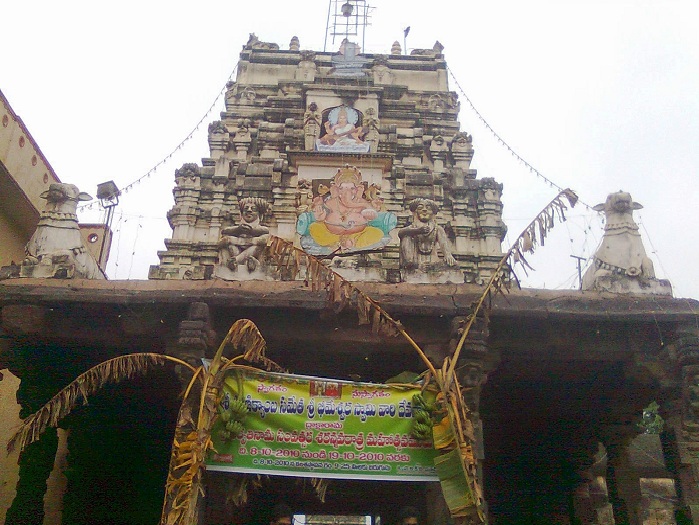- VedicFolks Exclusive Homam
- Spiritual Products
Standers 2
- VedicFolks Pooja
- Deity Idols & Statues
Standers 2
- Top Products

Draksharamam is a two floored ancient temple. The temple is built on 12 acres plot, with huge walls representing a fort. The temple is built by Bhima, the Eastern Chalukya King of Vengi during 9- 10th Century AD when his kingdom was attacked by Rashtrakootas. The temple architecture has a blend of Chalukya and Chola styles. The temple walls and pillars have splendid carvings of gods and goddesses. The Draksharamam temple has nearly 400 inscriptions dating back to 11th century in Telugu and Sanskrit languages. The temple has two prakaras. The outer prakara has four entrances marked with four gopurams on each side of the entrance. The entrance to the inner prakara is from the south. The south facing entrance is marked by a line of pillared two floored veranda. There are steps leading to the sanctum, on the first floor where the main deity- Lord Bheemeshwara is worshipped. At the entrance, idols of Dundi Ganapathy and Natya Ganapathy welcome the devotees to the temple.
The demon, Tarakasura performed immense penance and received the Atma lingam as a boon from Lord Shiva. With the blessings of Lord Shiva, Tarakasura committed atrocities against the Devas. The Devas, pleaded with Parvati Devi to put an end to Tarakasura. Parvati Devi killed Tarakasura through her son, Lord Shanmukha or Lord Subramanya. Lord Shiva instructed Shanmukha to destroy the atma linga in Tarakasura’s neck and then kill the demon. The atma lingam broke into five pieces when it was destroyed. These five pieces fell at five places known as Pancharamam. The first Pancharamam is Amareshwara, at Amaravathi which is installed by Lord Indra, the second is Someshwara at Bheemavaram installed by Lord Chandra, the third is Ksheera Ramalingam at Palakollu installed by Lord Rama, the fourth is Kumara Rama Bheemeshwara in Samalakota installed by Lord Shanmukha and the fifth being Draksharamam. The Saptarishis requested River Godavari to come over to Draksharamam to purify the piece of Atma lingam fallen at Draksharamam. But Godavari responded late, thus Lord Shiva emerged himself in Draksharamam. Thus Lord Bheemeshwara is considered as a Swayambu at Draksharamam.
Draksharamam is an important Maha Shakthi Peetha. This place is also known as Dakshina Kashi along with Srisailam and Kaleeswara or Kalahasti which constitute the three sacred Shiva Lingas of Andhra Pradesh. Here Devi Sati’s left cheek has fallen. Devi is worshipped as Manikyamba and Lord Bhairava as Bheemeshwara. Draksharamam is one of the five Pancharamams, (sacred places of Lord Shiva) the other four being Amararamam, Ksheeraramam, Somaramam and Bhimaramam. Draksharamam is 6 kms from Ramachandra Puram, East Godavari District of Andhra Pradesh. Draksharamam is about 17 kms from Kakinada and 40 kms from Rajamundry.
Shivaratri in Maga masa (Feb- March) is celebrated with great fervour. Navaratri celebrated during Ashwija masa (Sep- Oct) draws people from all over the State. Devi is worshipped as nine different forms of Shakthi during the nine days of Navaratri. Karthika Masa (Nov-Dec) is another festival celebrated, during which people throng to Lord Bheemeshwara Swamy temple to participate in the Karthika Deepotsavam on Karthika Poornima. On Bhima Ekadashi, Swamivari Kalyanam, (marriage ceremony) of Lord Bheemeshwara and Maniykamba is celebrated during Maga Masa (Feb- March). In December, the birth anniversary of the Lord is celebrated as Shasti.
Do:
Don't s: